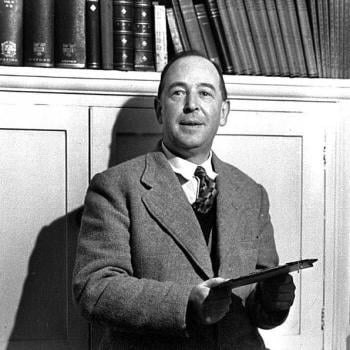The Third Church of Christ, Scientist, in Washington, D.C., has been declared a historical landmark because it is such a good example of the architectural style known as “Brutalism.” The building is only 36 years old, it has no windows, it is ugly, it is utterly unfunctional, and the congregation itself hates it. But now it cannot be demolished, as the congregation wants to do, or even substantially remodeled.
“Brutalism” was a radical, in-your-face style of architectural “modernism,” brutally rejecting ornament, meaning, and obsolete pre-modern notions such as beauty. It is characterized by the use of extremely rough, hardly-finished concrete, emphasizing the nitty-gritty materiality that is all there is to existence.

So why would a church want a building in the “brutalist” style? I mean, Christian Scientists don’t even believe in the true existence of the material world, so that their theology is contradicted by every detail in the building! Well, back in 1971, some of you may recall, churches wanted to be relevant to the modern world, and “brutalism” must have seemed very cutting-edge and impressive, a sure way to draw in denizens of “the secular city.”
Well, the “brutalist” sanctuary was designed to hold 400 worshippers, apparently the size of the congregation in 1971, but now it has only 40 or so. And, despite its designation as a historical relic, the building is mocked and derided as a blight to the neighborhood by the people who live in the city. One lesson to be learned is that committing yourself to a fashion is the surest way to be old-fashioned, since, by definition, fashions are always changing. Notice, by contrast, that the classical architecture of Washington’s national buildings is STILL magnificent and that it never ages in its appeal.
Another lesson is for churches today. A basic principle of aesthetics is that the form must be in harmony with the content. And when they diverge, it is the FORM that is going to communicate more than the content that it is supposed to convey. Today we have church buildings designed like pre-fab industrial buildings (conveying the message that the faith is cheap and temporary), concert halls (conveying the message that faith has to do with entertainment) and shopping malls (conveying the message that faith has to do with consumerism). Pre-modern churches were built in the shape of crosses, conveying the message that in the church people come together in the Cross of Jesus Christ. You can certainly have contemporary church architecture. My first Lutheran church had a contemporary style that communicated powerful Christian messages: a massive concrete altar; a skylight pouring in light from above; steel and brick structures that communicated the solidity and strength of what was taught in that building.)
Of course, the Gospel can be preached in any style of building or in no building. But just remember, the laws of aesthetics and the relation of form and meaning operate whether anybody likes them or not. Beware of unintended messages. And of becoming irrelevant in one’s zeal to be relevant. Remember the “brutalist” church in D.C. Stop by and see for yourself. It’s going to be around for a long time.













